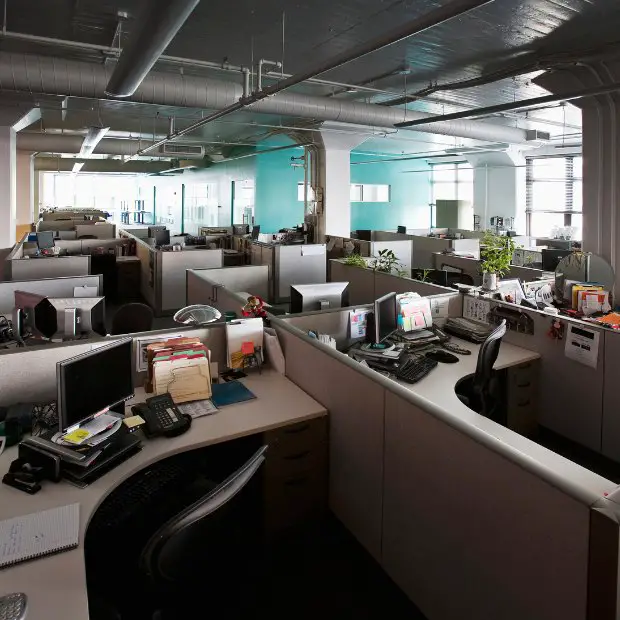
As someone who’s been embracing remote work for years, I’ve witnessed firsthand the seismic shifts in workplace dynamics. These changes, once mere ripples, have now swelled into waves, reshaping our work environments.
From the rigid cubicles of the past to today’s collaborative co-working spaces, the transformation is not just physical but cultural. We’ve evolved from a time when the work-life balance was an afterthought to an era where it’s central to our professional ethos. In this article, we’ll dive into the five most significant workplace changes of the 21st century that have become second nature to enthusiasts of remote work like myself.
Here are the biggest workplace shifts of the 21st century:
1. Employee Wellbeing: Cultivating a Culture of Care and Recognition
In past years, employers didn’t tend to care if their employees were well or not. They expected them to turn up and do their job or be fired. We’ve come a long way since then. Not only are we celebrating them and their achievements with promotions and classy corporate gifts, but we’re also implementing employee wellness programs to ensure they’ll continue being valuable members of our workforce.
We’re offering mental health support, flexible benefits, and more comfortable and ergonomic working environments to support overall wellness. The average workplace still has a long way to go, especially regarding burnout, but it’s fair to say that employee wellness is more prioritized now than ever before.
Key Statistics:
- Employee Assistance Programs (EAPs): A significant 90% of employers now offer Employee Assistance Programs, reflecting a strong commitment to supporting mental health and other employee needs in the workplace. (Source: International Foundation of Employee Benefits)
- Return on Investment: Companies that implement wellness plans focusing on prevention and early action see substantial financial benefits. Reports indicate a return of $1.47 for every dollar spent on corporate wellness initiatives. (Source: U.S. Chamber of Commerce)

Employees’ mental well-being has become a major concern for large organizations around the world. And for a good reason!
2. Flexible Work: Redefining the Boundaries of the Office
Compare the average office structure of today to the average from several years ago, and it’s hard not to be impressed by how far we’ve come. In the past, employees were often expected to work fixed hours from their in-office cubicles. If they didn’t show up, there could be repercussions.
Of course, there were exceptions to the rule, but many office environments look dramatically different today. Many employees are now offered more flexible working environments – from the hours they work to where they work them. We’ve got remote work packages, four-day working weeks, and working hours that fit around our personal lives and not the other way around.
Key Statistics:
- Widespread Flexibility: About 58% of Americans now have the option to work from home at least one day a week, with 35% able to do so five days a week. This flexibility spans various job types and sectors, indicating a significant shift in work culture. (Source: McKinsey & Company)
- Employee Preference for Flexibility: A vast majority, 87%, of those offered flexible work options embrace them. Additionally, while 58% have the option to work from home part-time, 65% of employed respondents would prefer to do so all the time, demonstrating a strong desire for more flexible work arrangements across different demographics. (Source: McKinsey & Company)

Co-working is an excellent way to foster human connections in a world that’s going fully remote.
3. Digital Advancement: Revolutionizing Work with Cutting-Edge Technology
Technology has evolved in leaps and bounds. We’re no longer rifling through filing cabinets or relying on hand-written notes. Instead, we’re working on our smartphones, tablets, and computers, with access to work information from anywhere in the world.
We’re also using robots to assist us in manufacturing and AI to help us make more informed decisions. Even our accounting practices have changed, with more automation and data analytics, to understand our financial positions with more accuracy.
Key Statistics:
- AI Adoption in Business: A significant 77% of businesses are either already utilizing AI technology or have plans to do so. Currently, 35% of businesses have integrated AI into their operations, while an additional 42% are poised to adopt it soon. (Source: IBM)
- Daily AI Interaction: A significant 55% of Americans interact with artificial intelligence at least once daily, according to a survey of over 11,000 U.S. adults. Furthermore, 27% of these respondents engage with AI multiple times a day. (Source: Pew Research)
4. Diversity, Equity, and Inclusion (DEI): Building a More Equitable Workplace
The sad reality is that racism was once a significant part of the average workplace. Black workers were stigmatized and dehumanized, and white people were often more likely to be hired than black people.
We still have a long way to go, but diversity, equity, and inclusion programs in the workplace are allowing for impactful change. We’re more aware of our unconscious biases, changing our company cultures, and relying on outside DEI experts when we know we’re not changing fast enough.
Key Statistics:
- General Perception of DEI: A majority of employed U.S. adults, 56%, believe that focusing on increasing DEI at work is beneficial. The survey indicates that experiences and opinions about DEI vary significantly across different demographic and political groups. (Source: Pew Research)
- Workplace DEI Policies: About 61% of workers report that their company or organization has policies to ensure fairness in hiring, pay, or promotions. Additionally, 52% have DEI training or meetings at work, underscoring the efforts to promote these values in the workplace. (Source: Pew Research)

Studies show that the more diverse the workforce, the higher the financial results. Bringing many unique points of view under one roof pays off.
5. Environmental Sustainability: The Greening of Business Practices
Businesses are starting to realize that customers and clients care about the environmental footprint of the companies they’re working with. As a result, environmental sustainability initiatives are now commonplace. Businesses are working with more eco-friendly manufacturers, changing their business practices, and working hard to reduce their impact.
There’s no denying that we still have a long way to go before the average workplace operates seamlessly with a happy workforce. However, it’s undoubtedly satisfying to see just how we’ve come. In the decades to come, we’ll likely notice even more advancements and changes that we can be proud of.
Key Statistics:
- Consumer Spending on Sustainability: The segment of sustainability-conscious consumers worldwide has rebounded to 22%, after a dip to 18% in 2022. These shoppers are projected to spend a total of $1 trillion by 2027, highlighting the significant market potential for sustainable products and services. (Source: Kantar)
- Sustainable Product Growth: Products marketed as sustainable have experienced growth at a rate twice as fast as those not marketed as sustainable. This trend indicates a strong consumer preference for environmentally friendly options, with sustainable products becoming increasingly popular. (Source: NYU Stern)
Parting words
In the rapidly evolving workplace landscape, marked by enhanced employee well-being, flexible work arrangements, digital advancements, diversity initiatives, and sustainability efforts, our role extends beyond adaptation. We are called to actively shape this future, advocating for inclusive, innovative, and environmentally conscious practices. Let’s commit to forging workplaces that are not only efficient but also equitable and sustainable, setting a precedent for future generations. The steps we take now will define our era’s legacy in the world of work. Next up, you may want to explore a guide on remote work etiquette.
Hey there, welcome to my blog! I'm a full-time entrepreneur building two companies, a digital marketer, and a content creator with 10+ years of experience. I started RafalReyzer.com to provide you with great tools and strategies you can use to become a proficient digital marketer and achieve freedom through online creativity. My site is a one-stop shop for digital marketers, and content enthusiasts who want to be independent, earn more money, and create beautiful things. Explore my journey here, and don't forget to get in touch if you need help with digital marketing.

